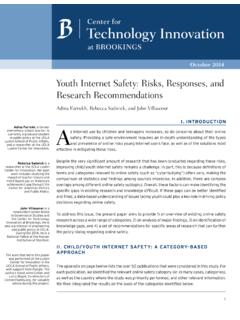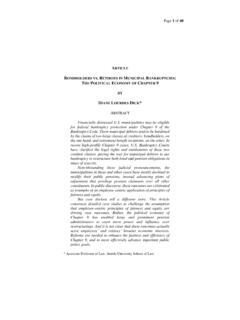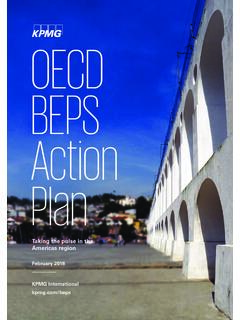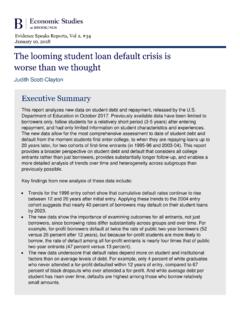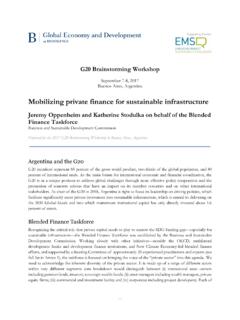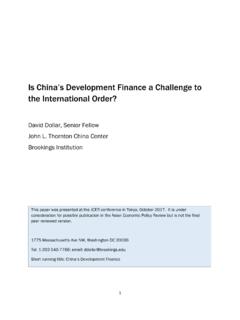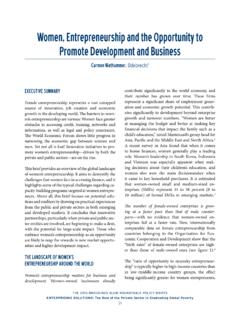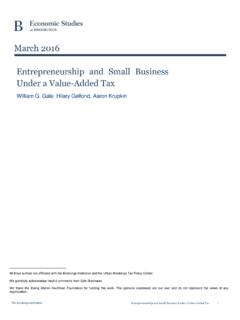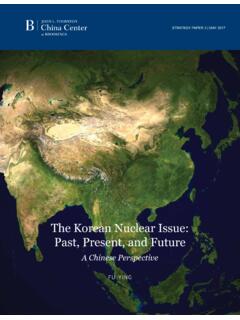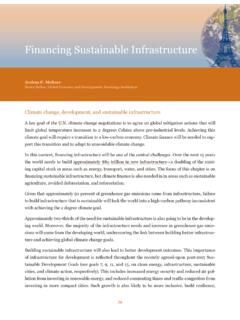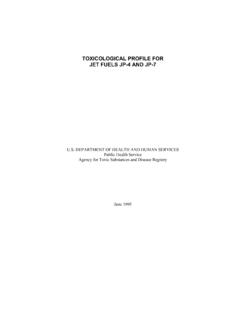Transcription of BOOSTING TRANSFORMATIONAL TECHNOLOGY - Brookings …
1 46 BOOSTING TRANSFORMATIONAL TECHNOLOGY : Creating supportive environments for game-changing innovationsChapter 348 Why is regulating TECHNOLOGY important? Are regulations and the regulatory environment likely to stifle innovation in Africa? What regulations are appropriate and even helpful for innovation? How can governments balance out regulations and entrepreneurship? Is there tension between the regulators and innovators in Africa? So far, nothing can elaborate on these questions better than the development, success, and spread of digital financial services (DFS) in Africa.
2 In particular, Kenya s M-Pesa (as well as similar products in Kenya and Tanzania), a mobile phone-based banking product and later a technological platform, has pushed the frontier of innovation and financial inclusion without compromising financial stability. Kenya s combination of a supporting policy environment with a sound regulatory and supervisory framework allowed space for innovators and entrepreneurs to introduce financial innovations and a diversification of products into the market. Regulators agreed with the innovators on prudent risk management, and the policy environment ensured a stable macroeconomic environment.
3 These combined factors ensured Kenya s success. These are major outcomes that form a strong base for lessons for 2017 in the African continent as well as for Kenya to sustain the frontier and move to the next , countries that have embraced DFS and created a regulatory yet innovation-friendly environment have provided the guidelines Regulatory environment and technological innovation in Africa: Any tension?ISSUE BRIEF FROM THE AUTHORNJUGUNA NDUNG U Former Governor, Central Bank of Kenya On Leave of Absence from the University of Nairobi49 Indeed, countries that have embraced digital financial inclusion and created a regulatory yet innovation-friendly environment have provided the guidelines to proactively shape market outcomes.
4 To proactively shape market outcomes. This lesson has allowed innovators to successfully introduce new products into the market with new delivery channels and methods. Those countries have raised their financial inclusion profiles and created vibrancy in the financial market and the totality of their economies. Thus, different countries in Africa that have provided better regulatory environments even at extremes such as the Kenyan case of test-and-learn approach have found great success. The case is different for those countries that have not embraced the digital financial revolution; often their constraints can be traced to their prevailing regulatory environment, but not their prevailing legal M-Pesa revolution and resulting technological platform developed in four innovative and virtuous stages, spurred by a conducive regulatory environment.
5 First, the mobile phone platform was used for money transfer between users and later for payments and settlement these uses were made easier and a rollout more possible in 2006 when the Kenyan government amended the communication law to recognize electronic units of money. The practicality of transforming cash into electronic units of cash, storing it on a SIM card, and simultaneously loading it into a bank account led to the development of a transactions platform in the absence of a national payments and settlement law. Second, encouraged by regulators, virtual savings accounts were developed using the same M-Pesa technological platform impacting the banking intermediation , the development and application of information capital (credit scores)
6 For participants in this technological platform arose as companies started using the M-Pesa payment data including travel and communication patterns to determine the risk profile of customers and offer them loans at affordable rates, eliminating information asymmetry inhibiting the development of credit markets in Africa. This development was supported by already-existing credit information bureaus and amendments on information sharing to the Banking Act. Finally, cross-border payments and international remittances based on the M-Pesa technological platform have become possible aided by the National Payments Act, which allowed for standalone payments and settlement units including foreign exchange remittances.
7 Now, the M-Pesa technological platform has revolutionized financial inclusion in Kenya to reach over 75 percent of the population and increase financial access touch points: percent of the population are within five kilometers of a touch point, and there are financial access touch points per 100,000 Kenyans compared to in Uganda, in Tanzania, and in AND MOBILE PHONE ACCESS IN AFRICA DIFFER GREATLYM obile phone access in sub-Saharan Africa has grown by leaps and bounds in the past decade: Almost 82 percent of all Africans had a cell phone in 2015. The internet, however, has not seen that sort of uptake, largely because of the infrastructure needed to provide it.
8 Indeed, the world has an average of 209 internet servers per person and OECD members average 1087 servers per person, but the region averages only 10. Unsurprisingly, then, access to the internet remains low: Overall, only 15 in 100 Africans have 15-24 AGE 45+AVERAGE (INDIVIDUALS) FOR AFRICAN COUNTRIES1502040608010019902000200520102 015 Mobile cellular subscriptionsInternet usersMobile cellular subscriptions and internet users in sub-Saharan Africa (per 100 people)Source: World Bank. 2016. World Development Report 2016: Digital Dividends. Washington, DC: World Bank. Based on data from Research ICT Africa (various years), ITU, and Eurostat (EC, various years).
9 Data available at divide: Who has access to the internet in sub-Saharan Africa? (percent)Source: World Bank World Development Indicators (2015).50 FIGURE 51 INTERNET PRICES CAN CONSTRAIN ACCESSI nternet prices in sub-Saharan Africa vary wildly, from $3037 per megabits per second (Mbit/s) in Chad to $8 in Ghana, though the region s average is $366 Mbit/s overall. A major trend, though, is how geography affects these prices, as landlocked countries pay an average $365 more than coastal countries per Mbit/s. Given that much of Africa recieves its internet via (albeit expensive) undersea cables, coastal countries have much easier access.
10 New initiatives to provide internet via low-orbit satellites and high-altitude balloons offer the hope of more accessible, cheaper internet for all, though still have a long way to go when it comes to cost and : Price per Mbit/s in US$ PPP a month in 2014 Q4/2015 Q1 for fixed, residential broadband service. Mbit/s = megabits per second; PPP = purchasing power parity. Source: World Bank. 2016. World Development Report 2016: Digital Dividends. Washington, DC: World Bank. License: Creative Commons Attribution CC BY IGO. Available at: Data URL: per megabits per secondNo data<500500 - 10001000 - 15001500 - 20002000 - 25002500 - 3000>3000 GhanaMalawiMauritiusGabonSouth AfricaZimbabweSudanMozambiqueKenyaMaurit aniaSomaliaC te d IvoireSenegalZambiaBotswanaNigeriaEthiop iaDjiboutiAngolaNamibiaMadagascarTanzani aTogoComorosBeninBurkina FasoGuinea-BissauLesothoNigerMaliCameroo nChad0 Landlocked (average: $ PPP)Coastal (average: $ PPP)FIGURE 52 TECH HUBS IN AFRICAS ource: Firestone, R.
